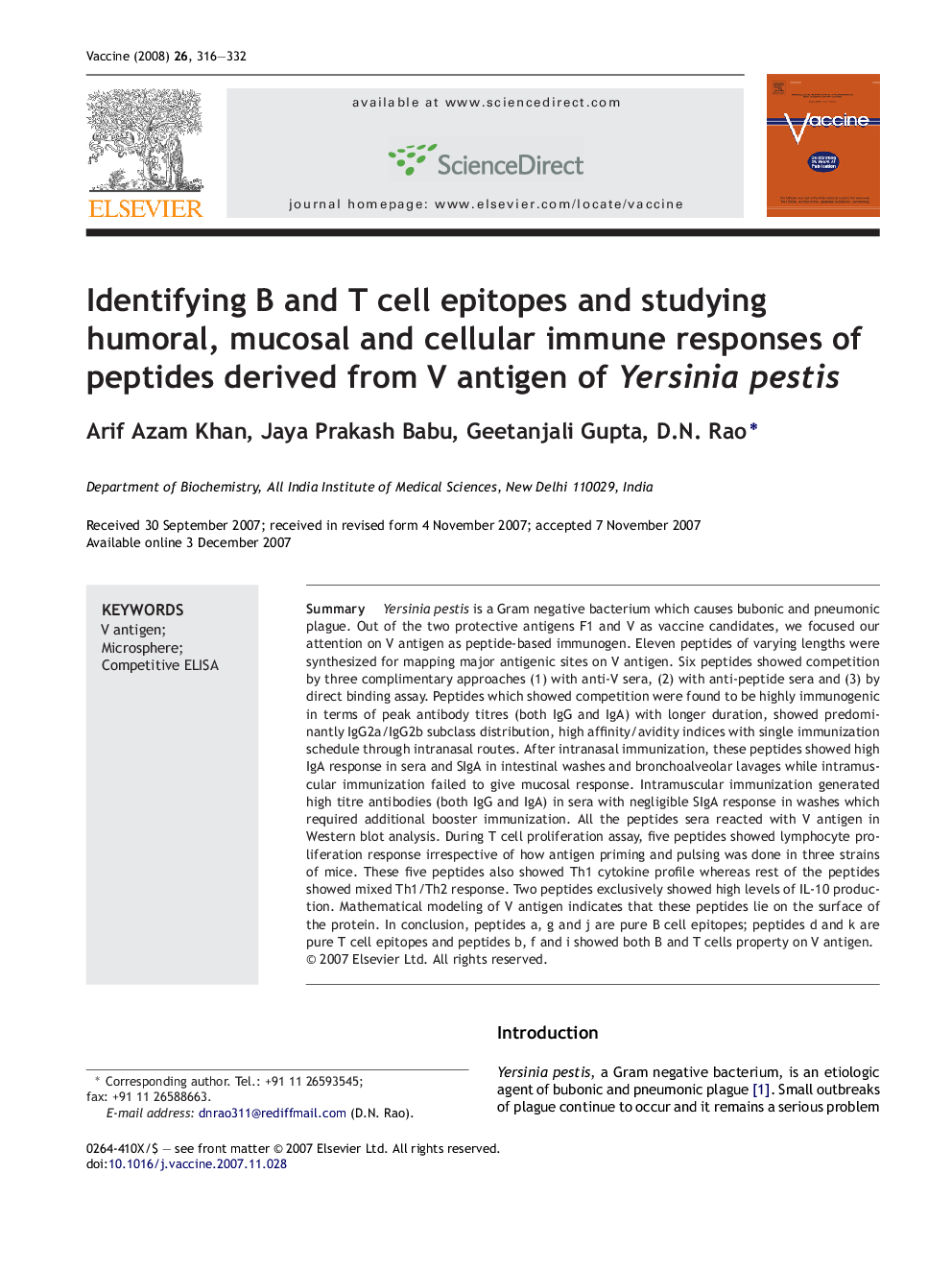| Article ID | Journal | Published Year | Pages | File Type |
|---|---|---|---|---|
| 2407376 | Vaccine | 2008 | 17 Pages |
SummaryYersinia pestis is a Gram negative bacterium which causes bubonic and pneumonic plague. Out of the two protective antigens F1 and V as vaccine candidates, we focused our attention on V antigen as peptide-based immunogen. Eleven peptides of varying lengths were synthesized for mapping major antigenic sites on V antigen. Six peptides showed competition by three complimentary approaches (1) with anti-V sera, (2) with anti-peptide sera and (3) by direct binding assay. Peptides which showed competition were found to be highly immunogenic in terms of peak antibody titres (both IgG and IgA) with longer duration, showed predominantly IgG2a/IgG2b subclass distribution, high affinity/avidity indices with single immunization schedule through intranasal routes. After intranasal immunization, these peptides showed high IgA response in sera and SIgA in intestinal washes and bronchoalveolar lavages while intramuscular immunization failed to give mucosal response. Intramuscular immunization generated high titre antibodies (both IgG and IgA) in sera with negligible SIgA response in washes which required additional booster immunization. All the peptides sera reacted with V antigen in Western blot analysis. During T cell proliferation assay, five peptides showed lymphocyte proliferation response irrespective of how antigen priming and pulsing was done in three strains of mice. These five peptides also showed Th1 cytokine profile whereas rest of the peptides showed mixed Th1/Th2 response. Two peptides exclusively showed high levels of IL-10 production. Mathematical modeling of V antigen indicates that these peptides lie on the surface of the protein. In conclusion, peptides a, g and j are pure B cell epitopes; peptides d and k are pure T cell epitopes and peptides b, f and i showed both B and T cells property on V antigen.
